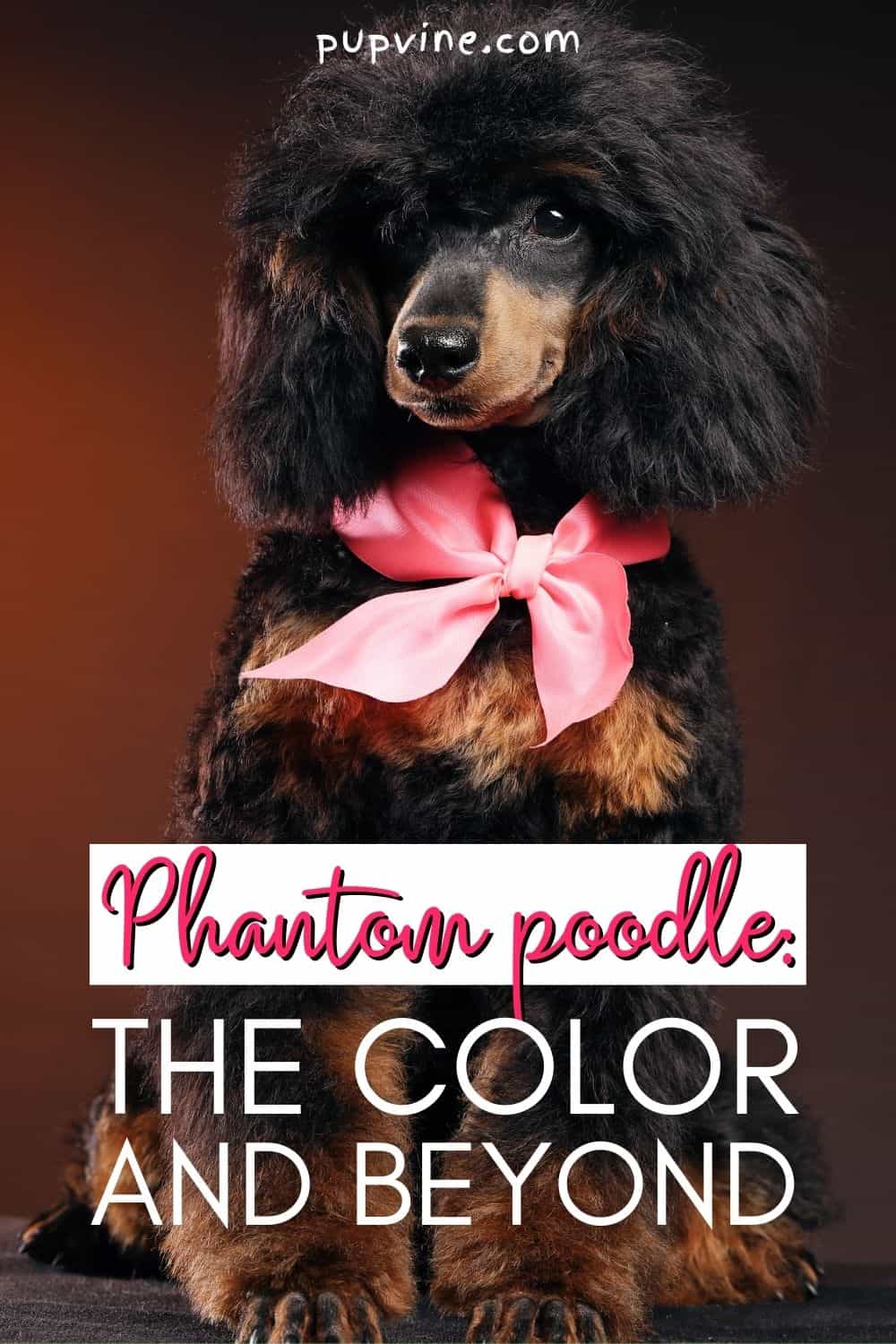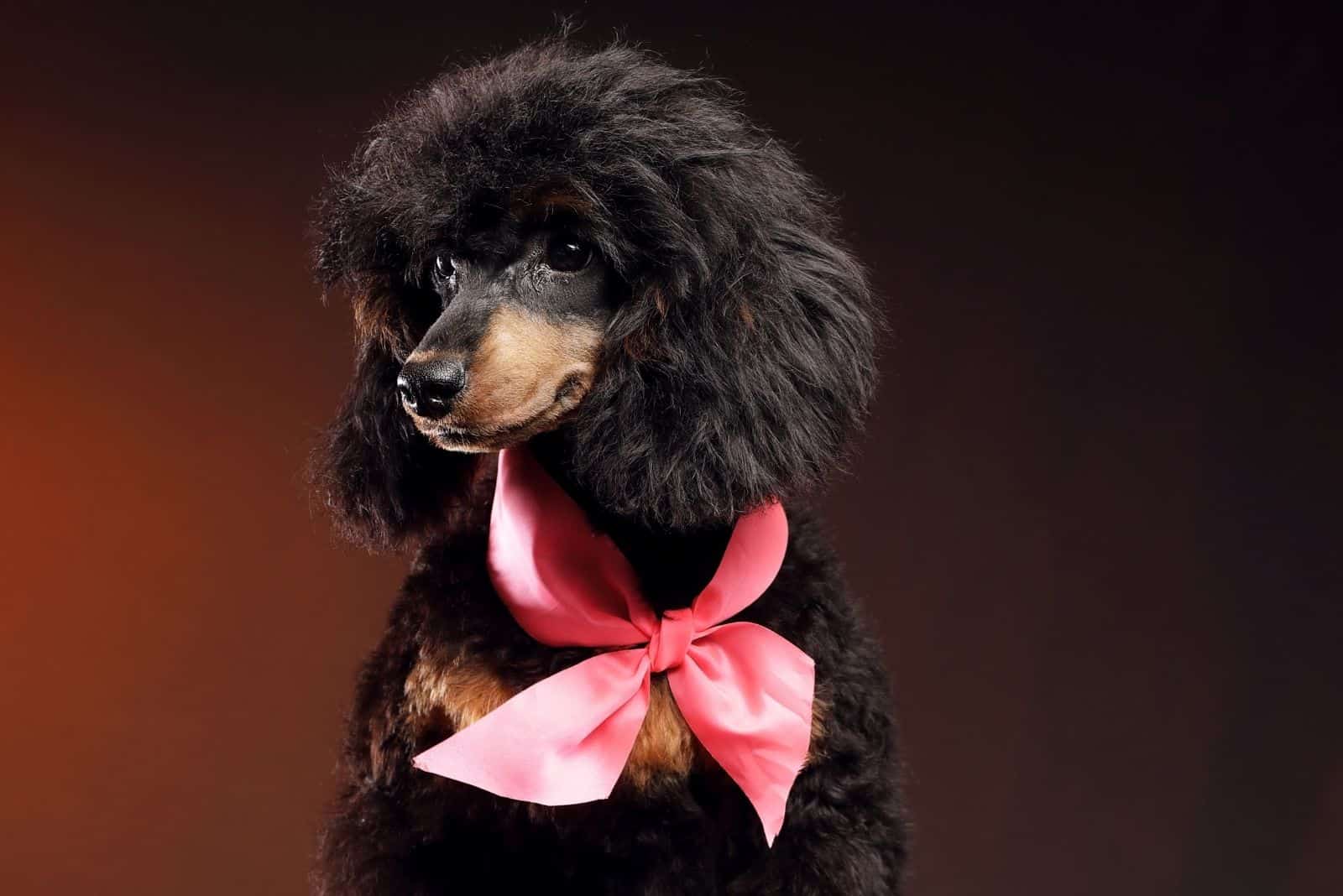Poodles are thought of as one of the most intelligent and loyal dogs. It’s what makes them such great pets as they are easy to train and keep around the house.
When it comes to choosing a Poodle, it mostly comes down to the color and pattern of their coat. In this regard, phantom Poodles are becoming very popular.
Every Poodle is somewhat different, and the difference in appearance will mean a slight difference in temperament as well.
The temperament of a Phantom Poodle is perfect for a family dog that’s both loyal and loving.
What does a Phantom Poodle look like?
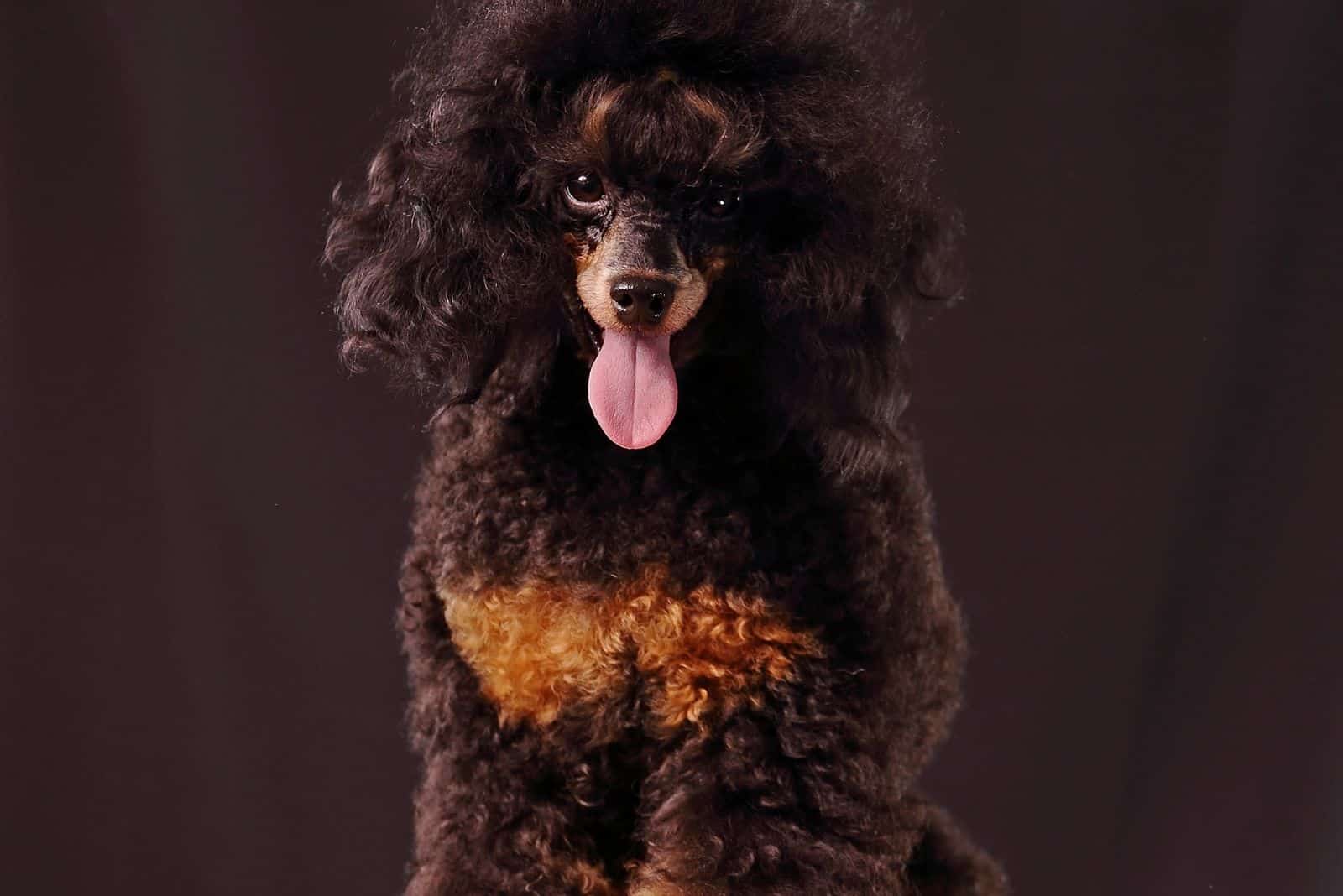
A Phantom Poodle isn’t a separate breed of dog, but the same as any other Poodle. The name refers to the coat of the animal and, more specifically, its pattern.
The American Kennel Club (AKC) doesn’t recognize this pattern as a separate color in accordance with the breed standard.
However, many dog owners prefer this pattern to the others, and the AKCs opinion is only important if you plan to send your pet to a dog conformation event.
It’s also known as a subset of Parti Poodles, which are recognized as a separate color.
Phantom Poodle sizes
As is the case with any Poodle color, the phantom variety comes in different sizes depending on the lineage and the breeding practice that has been used to produce them.
For a dog owner, it’s important to pick the size of their dog based on the facilities they have to provide to them.
The Phantom Poodle comes in four common sizes:
• Toy Phantom Poodle
• Miniature Phantom Poodle
Toy Phantom Poodles weigh about six to 10 pounds while Miniature Poodles weigh about 15 to 20 pounds.
Moyen or Medium Poodles weigh 40 to 50 pounds and the Standard Phantom Poodles weigh about 50 to 70 pounds.
Phantom Poodle colors
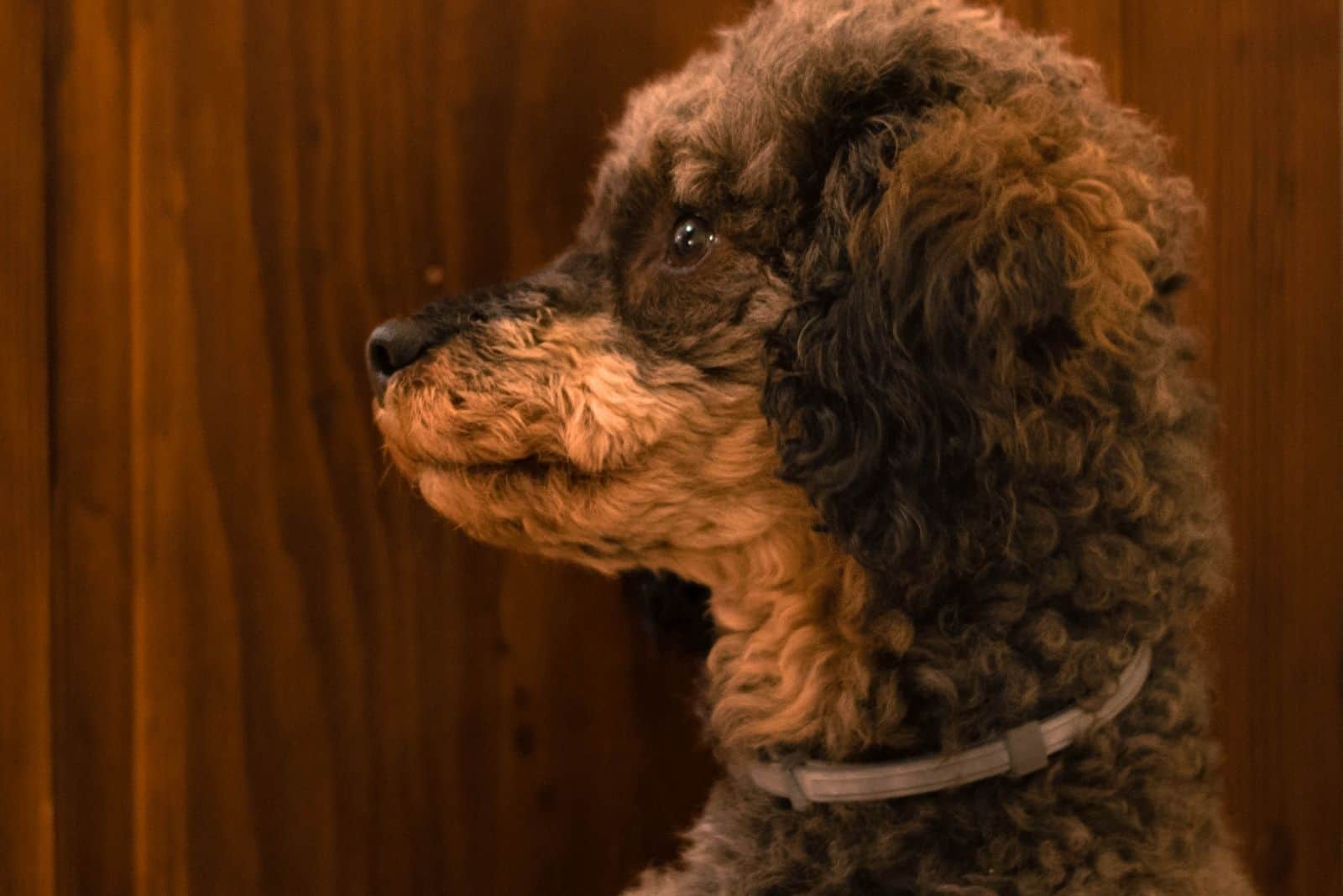
A Phantom Poodle has a separate type of coloring than a Standard Poodle.
It’s the type of coat that’s popular with many dog owners and lovers since it’s beautiful to look at and easy to take care of.
Both Parti- and Phantom-colored Poodles have two colors, but there’s a visible difference between them.
Solid-colored Poodles usually have one of these colors: black, cream, apricot, café au lait red, white, silver, or brown. There are other subdivisions known and used by breeders and sellers, but not by the AKC.
• Black Phantoms have a mixture of black and apricot, black and red, black and cream, black and gray, black and brown, or black and silver.
• Chocolate Phantoms are a combination of brown and apricot color.
• Red Phantom Poodles are a mixture of red and apricot.
• Silver Phantoms are a combination of silver and cream.
A Poodle can only be classified as a Phantom if it has a marking of a different color on a certain part of its coat.
Many call this a Dobie marking since it’s a common feature of a Doberman breed.
However, there are other dogs with the same feature.
For instance, a similar thing can happen with Dachshunds, certain Spaniels, Yorkies, Manchester Terriers, and certain Coonhounds.
How to produce Phantom Poodles
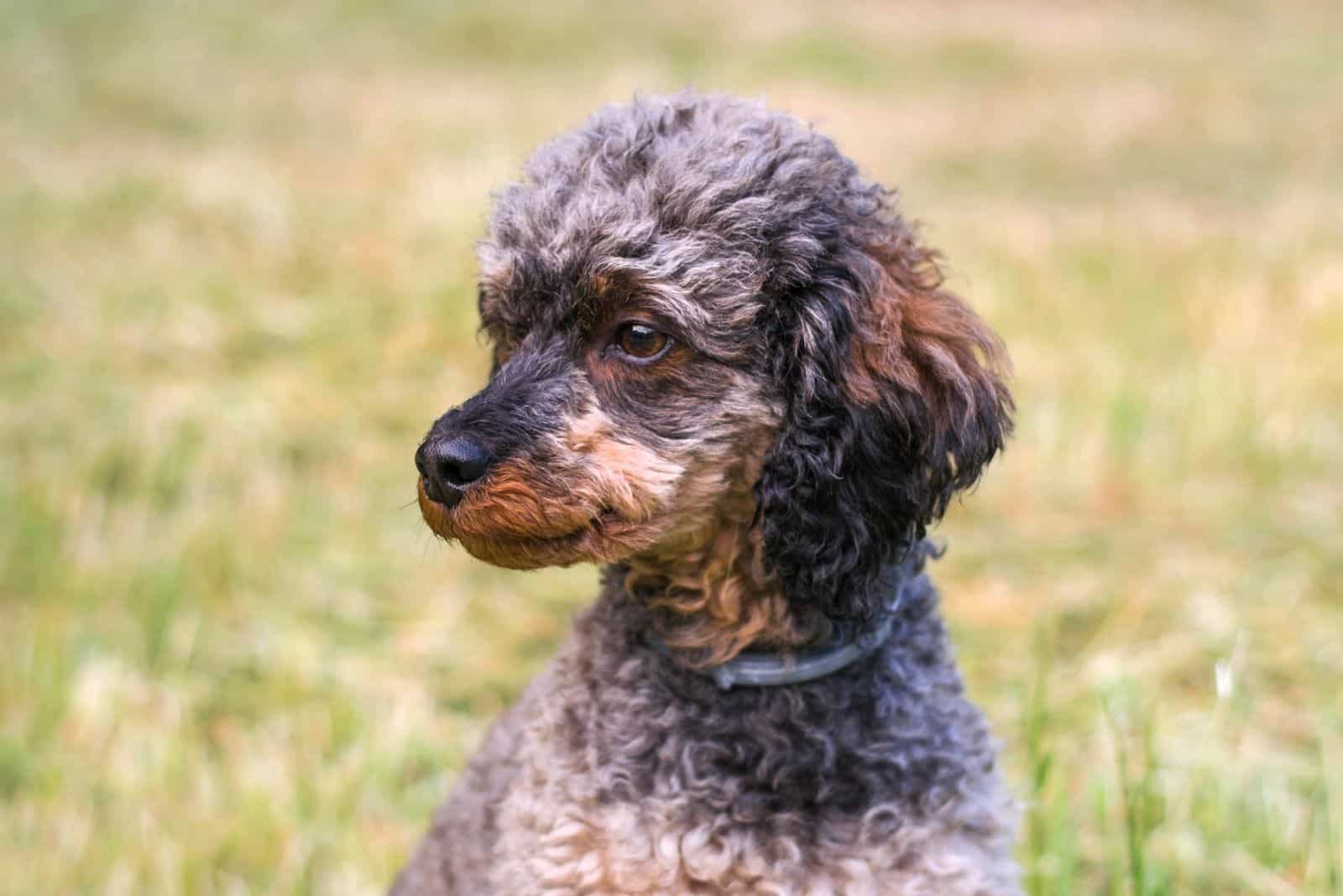
Phantom Poodles are genetically linked to Brindle Poodles. A Phantom Poodle dam or sire can produce a litter of brindle Poodles, and the other way around.
Brindle is a term used by breeders to signify a coat that’s striped, like a triggers’ coat.
When this term is used for Poodles, it means sable. It means that the coat is of one color while its tips are of another.
With most other dogs, the colored tips fade out with age, but this doesn’t happen with Poodles.
The rules for breeding Phantom Poodles
Too much inbreeding can create a variety of health problems for dogs, which is also the case with Phantom Poodles.
There are rules set for breeding these dogs in order to prevent just this kind of problem. The rules are the strictest in German, where Poodles are the most popular. It’s a golden standard on how to breed these dogs.
Inline breeding happens when dogs that are genetically too close are bred with one another, and that’s what is prohibited by current rules.
Dogs that are produced by such breeding may end up having premature color fading, bad teeth, or overbite.
Genes
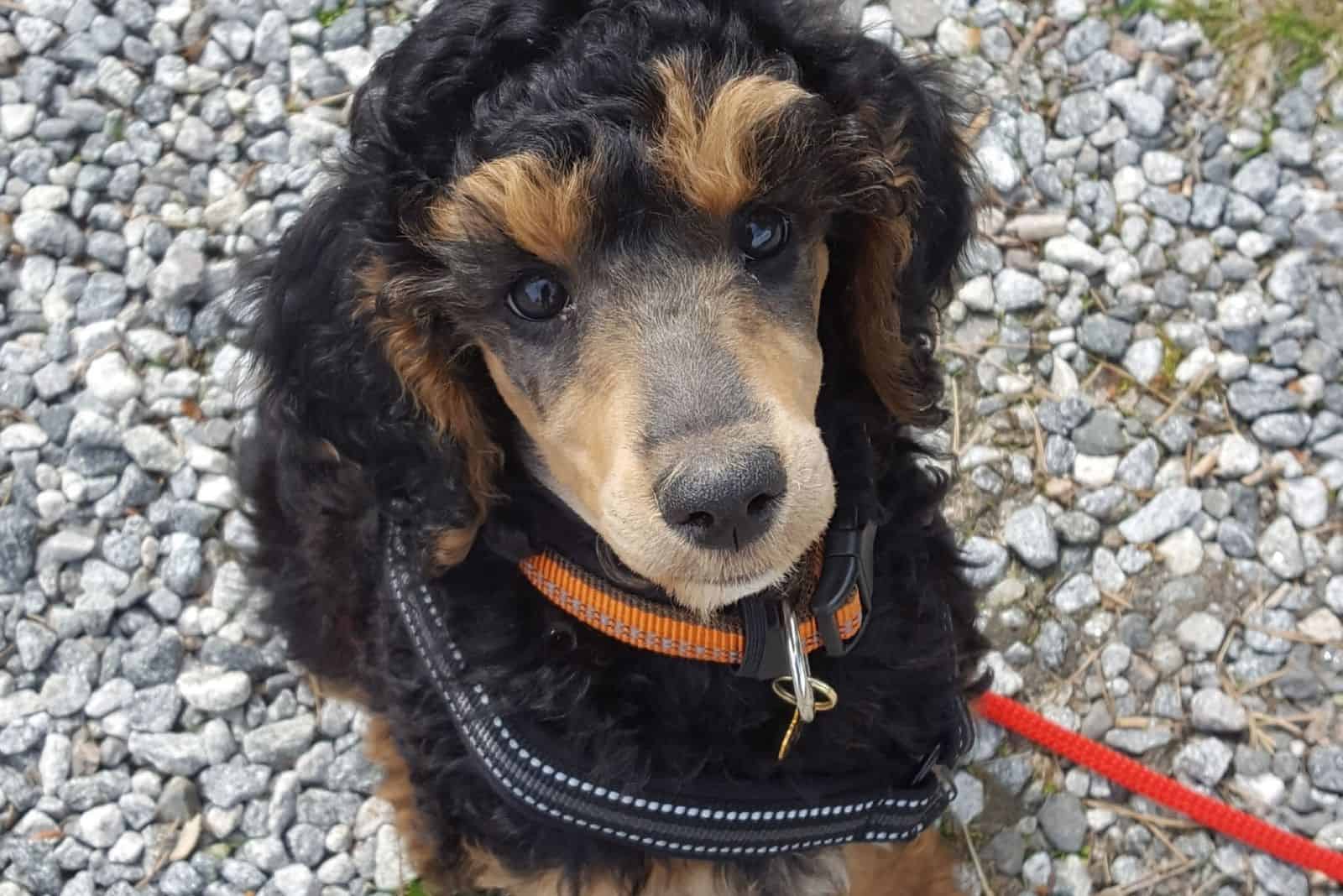
Phantom Poodles must have a ky/ky genotype (non-solid black that allows other colors to be expressed), plus an E (that allows for brindling) or an EM (which gives a black mask), and also be at/at (the gene that allows for tan points).
It may be a good idea to test your dog’s DNA before you buy it.
They are not always purebred, and there are many potential health problems that can be detected over time just by administering the test.
This will let you know what kind of dog you’ll be dealing with.
Phantom Poodle Health Issues
Health problems that are troubling other Poodles are also an issue for Phantom Poodles.
It’s best to be aware of these problems and to have pet insurance to be prepared for them. Also, make sure your dog has regular visits to the vet.
They have an average lifespan of ten to 13 years, and they are healthy and active throughout their lives. When you’re purchasing a dog from a reputable breeder, there’s usually a waiting list.
If you get a chance to get your pet Poodle quickly, it may be a bad sign when it comes to health problems and lineage.
Here are some of the health issues that are common with Poodles regardless of how pure their bloodlines are:
– Hip Dysplasia
– Thyroid Issues
– Epilepsy
– Bloating
– Addison’s Diseases
General care
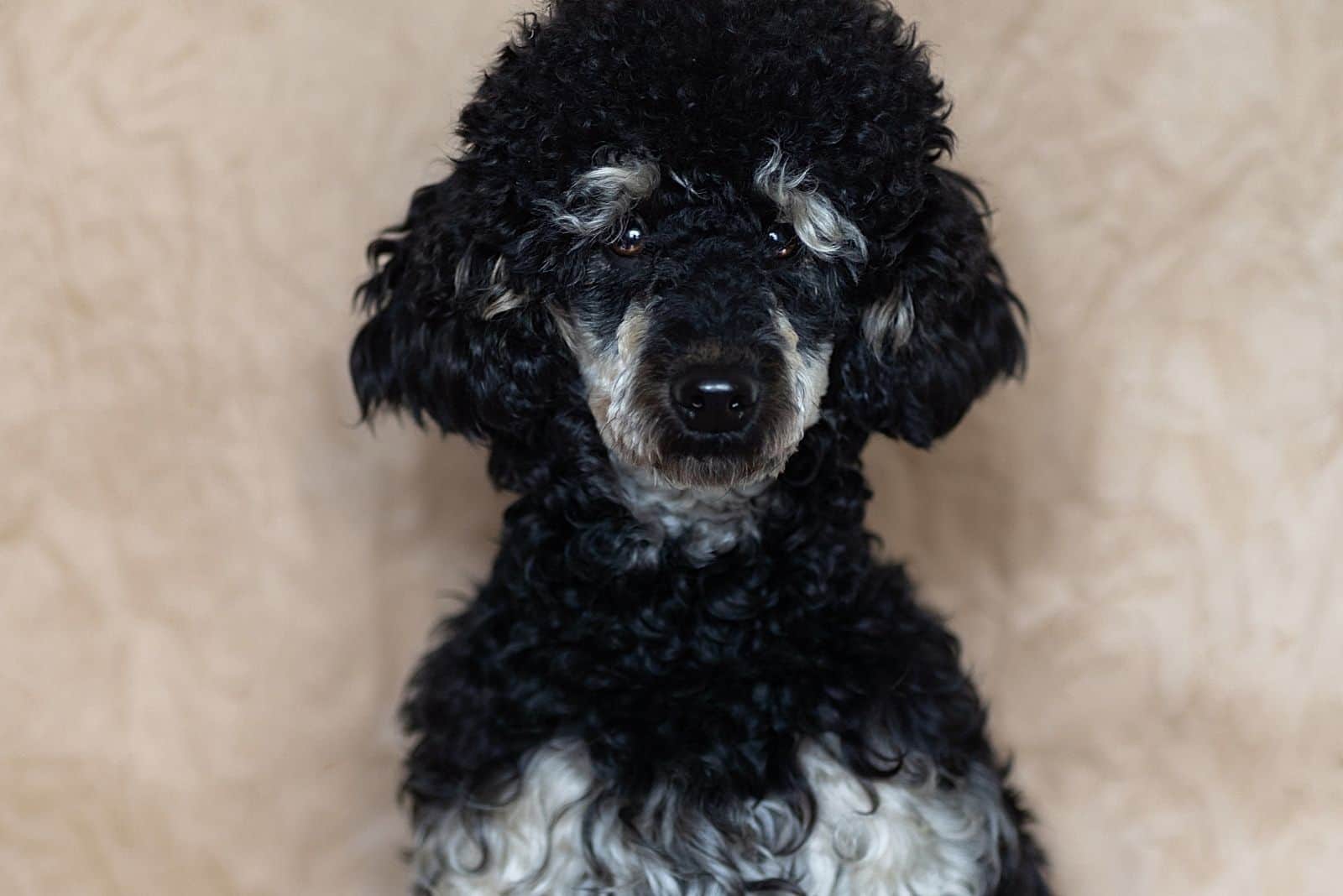
For the most part, it’s easy to care for Poodles since they are intelligent and healthy dogs. Most of the work that needs to be done is walking them and taking care of their beautiful coats.
You will definitely have to work on adapting your dog to a home lifestyle also.
If you adopt your poodle as a puppy, then they will be easy to train as are other dog breeds that are generally used as family dogs.
Coat care
The most beautiful thing about Phantom Poodles is their coat, at least when it comes to appearance. That’s why you should pay special attention to it and provide it the care it needs.
All double-colored Poodles, such as Parties, Mismarks, and Tuxedo Poodles, require the same type and level of care.
Solid-colored Poodles are a bit easier to treat, but for the most part, it’s about making sure you brush your puppy daily and that you take them to a dog spa every six to eight weeks. If the dog is more active, you’ll need to do it more often.
Strange coat colors
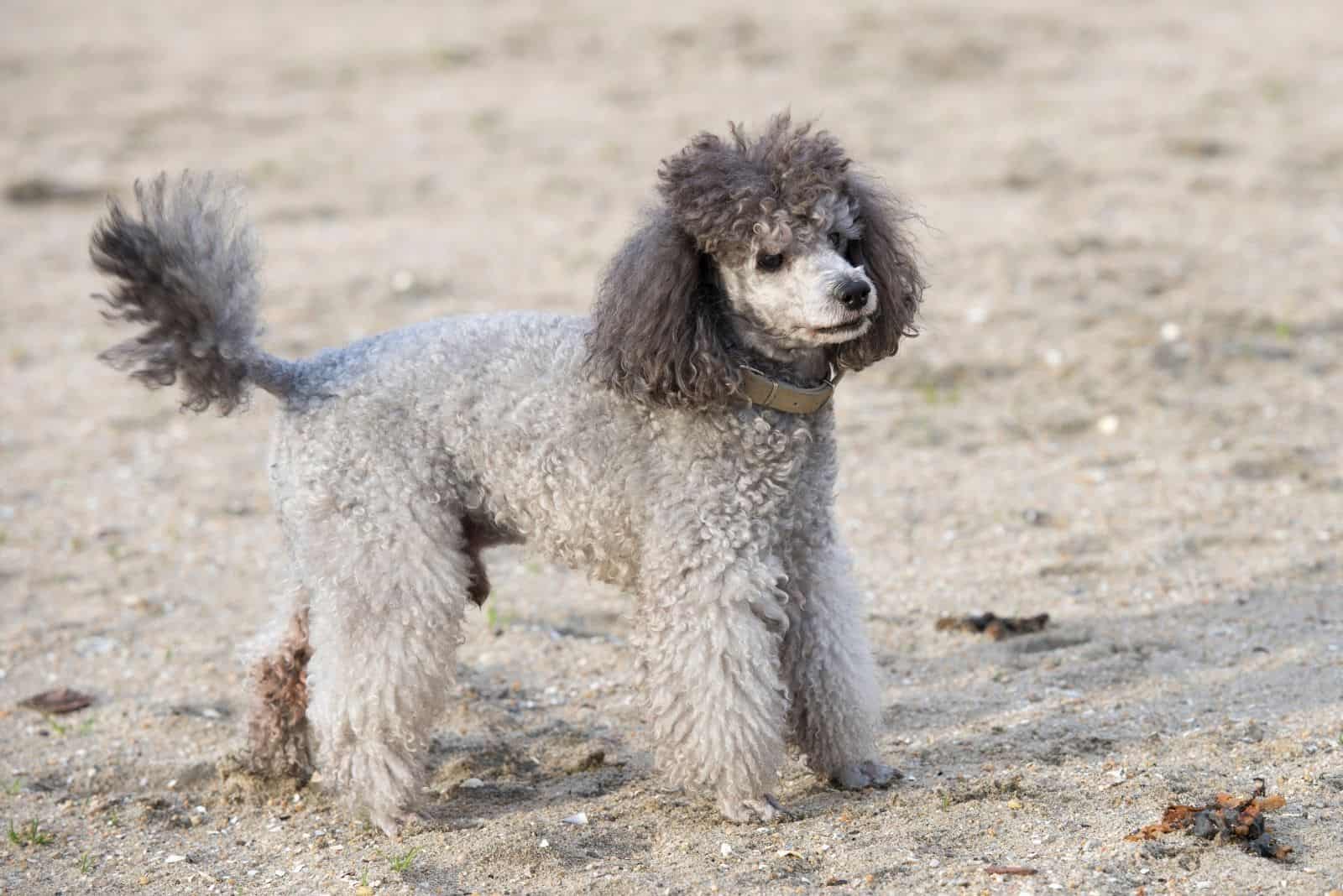
Every now and then, there’s a Poodle that doesn’t fit with any of the AKCs descriptions, and that presents an oddity.
They sometimes come out of the same litter as Phantom Poodles, and some find them to be an unwanted surprise while others enjoy them for that exact reason.
Such patterns are often called a seal-and-ghost tan. For the most part, it’s the black dogs that will exhibit this feature more than the white ones. Faint tan markings are also visible with Phantom Poodles.
Where to get Phantom Poodles
Since these Poodles are rare and there are strict rules about how to breed them, it’s best to get your Phantom Poodle from a reputable Poodle breeder.
They will make sure that the dog has the best possible lineage and that it exhibits the best traits of the breed.
There are also a lot of rescue shelters and rehoming options. When you get your dog from one of those, it may be best to do a DNA test and figure out what kind of potential health problems they may have.
Temperament
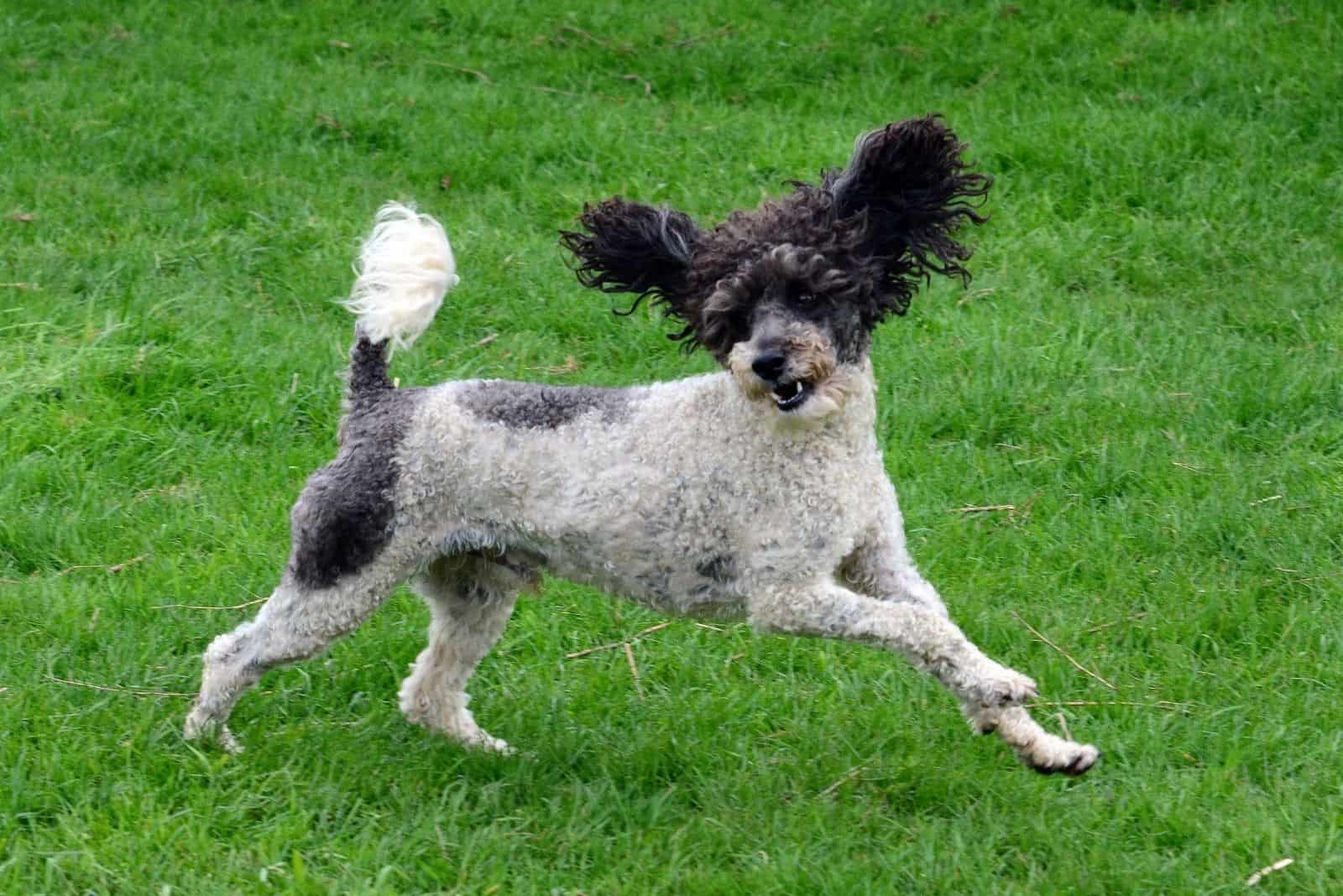
Poodles are often misjudged when it comes to their temperament. They are seen as weak and submissive dogs, but that’s as far away from the truth as it can be.
Poodles are energetic and playful dogs, and that’s why they are so beloved as family pets.
They are also one of the smartest dog breeds out there, and they are often bred mixed with a Labrador Retriever to get the best out of the two worlds.
This is true for all Poodles regardless of their color combinations.
Is a Phantom Poodle a good family dog?
For the most part, the answer is yes. The temperament and the care-related needs make a Poodle a good dog for any family lucky enough to take care of it.
Poodles are also very gentle and loving, and they soon form a strong bond with the family they are with.
There are some considerations to keep in mind, however. It’s a small dog, and if you already have a larger pet, they may not get along very well to no fault of the Poodle.
If you get a Poodle at an early age, the training will be easier, but older dogs will have a temperament of their own, especially if they’ve been through a bad experience.
A few final thoughts
A Phantom Poodle isn’t a separate breed of Poodle, but a name for the coloring pattern of a standard Poodle.
It’s, therefore, exactly the same as any other purebred Poodle, but with a different and somewhat strange color and patterns.
Most dog owners look for this feature in particular because they want their Phantom Poodle to be beautiful and cuddly.
The best way to keep it that way is to take care of it both when it comes to grooming and overall health.
Read Next: Dog Colors 101: An Introduction To Doggy Shades And Patterns
